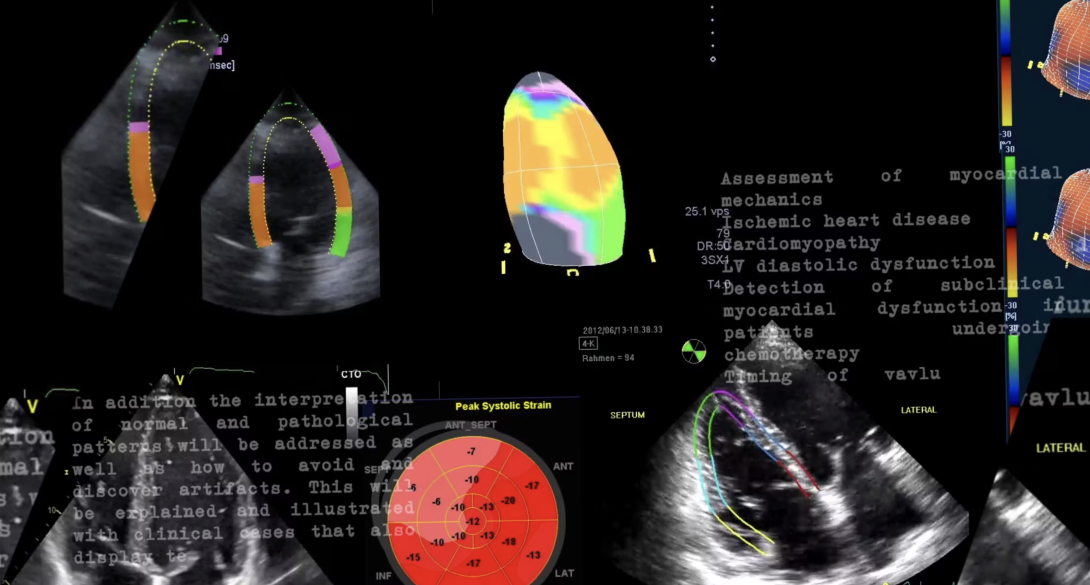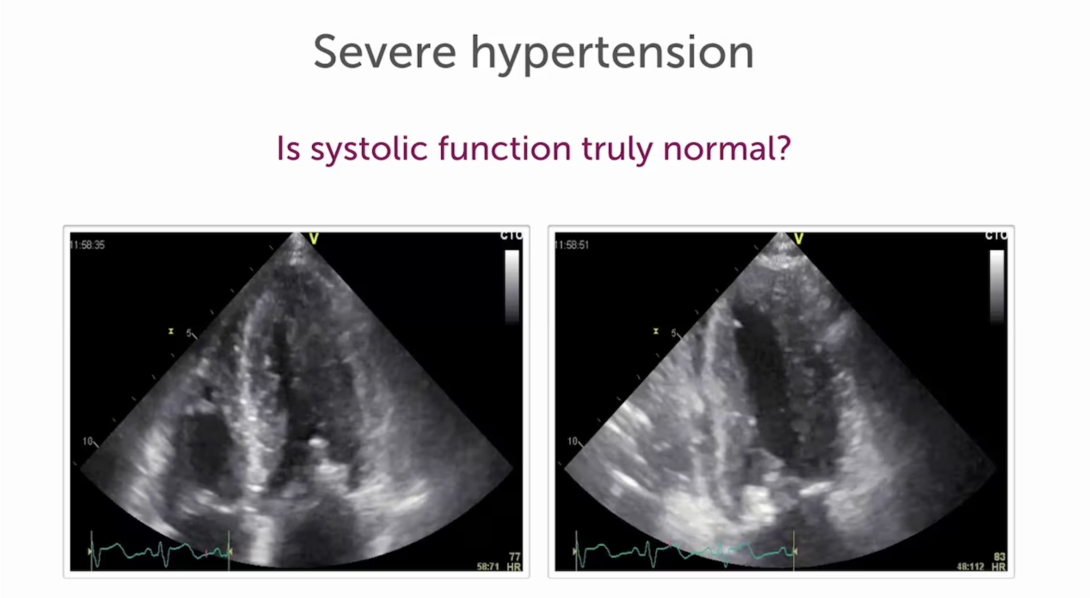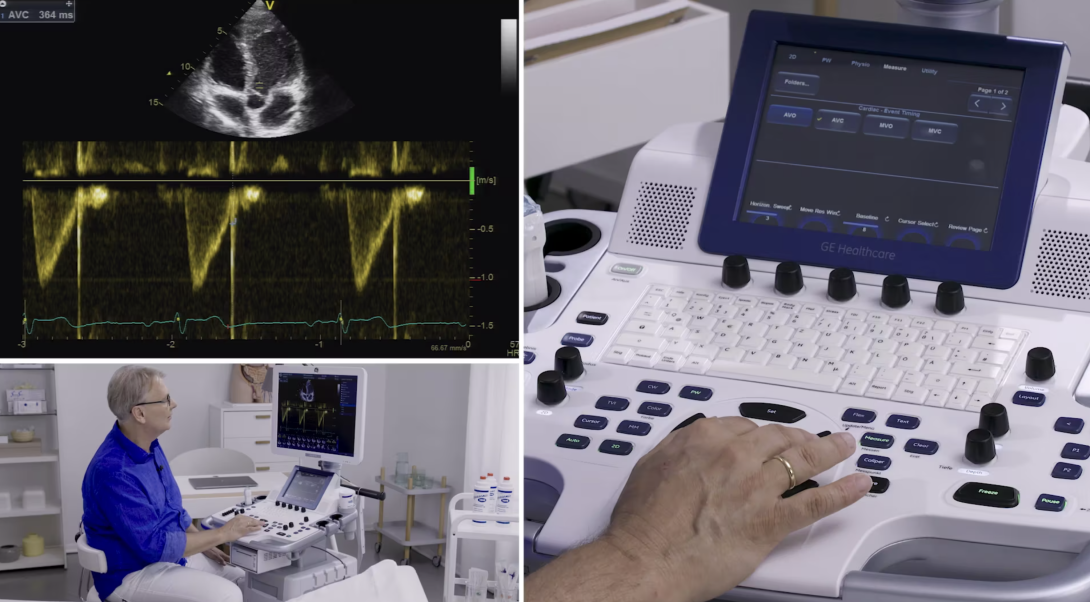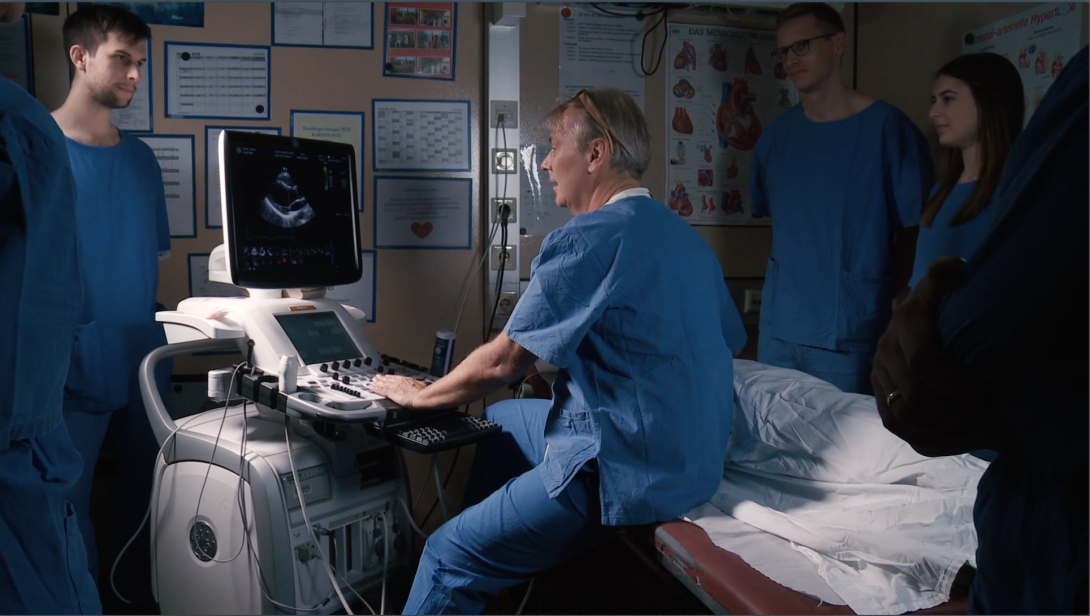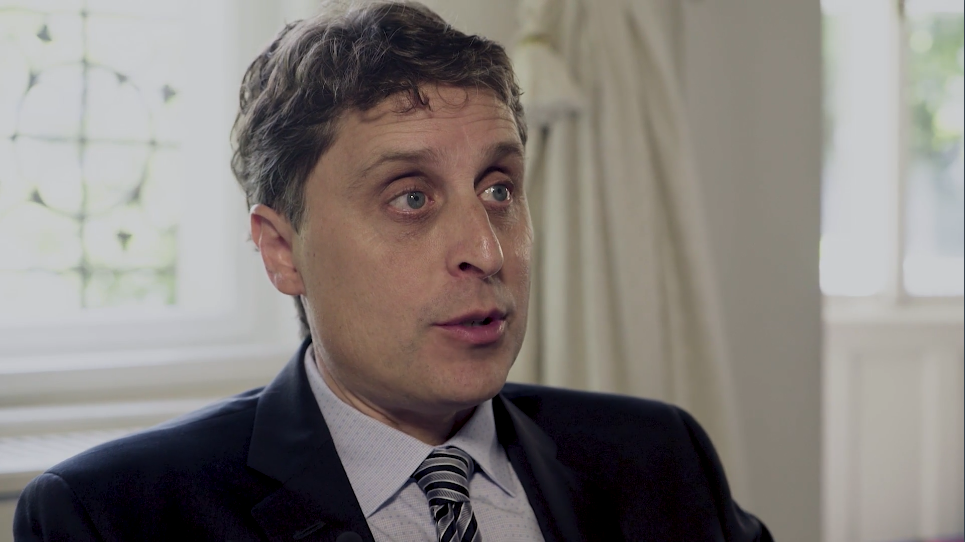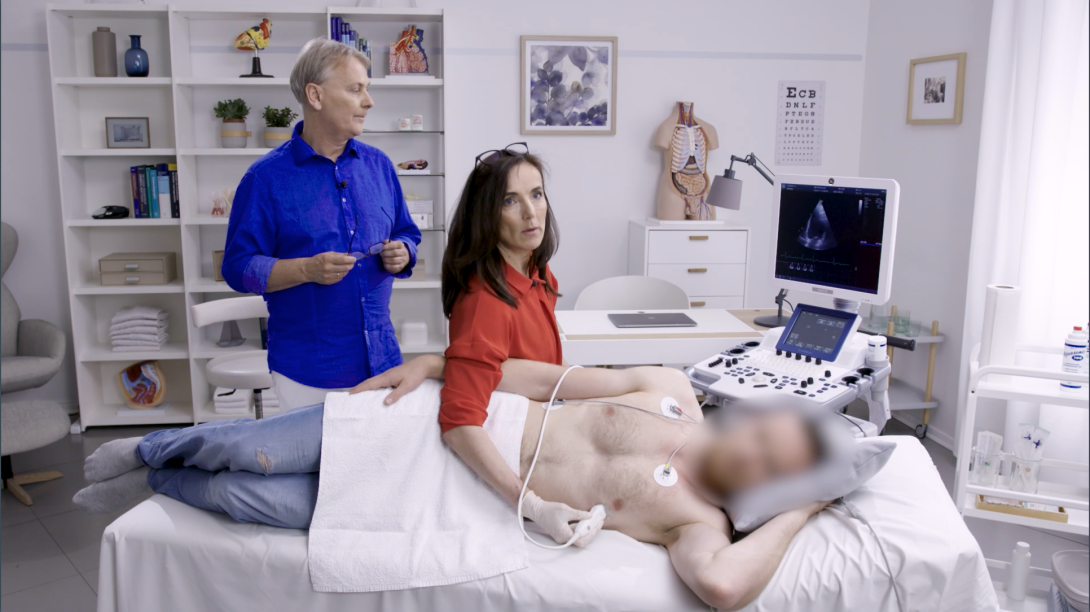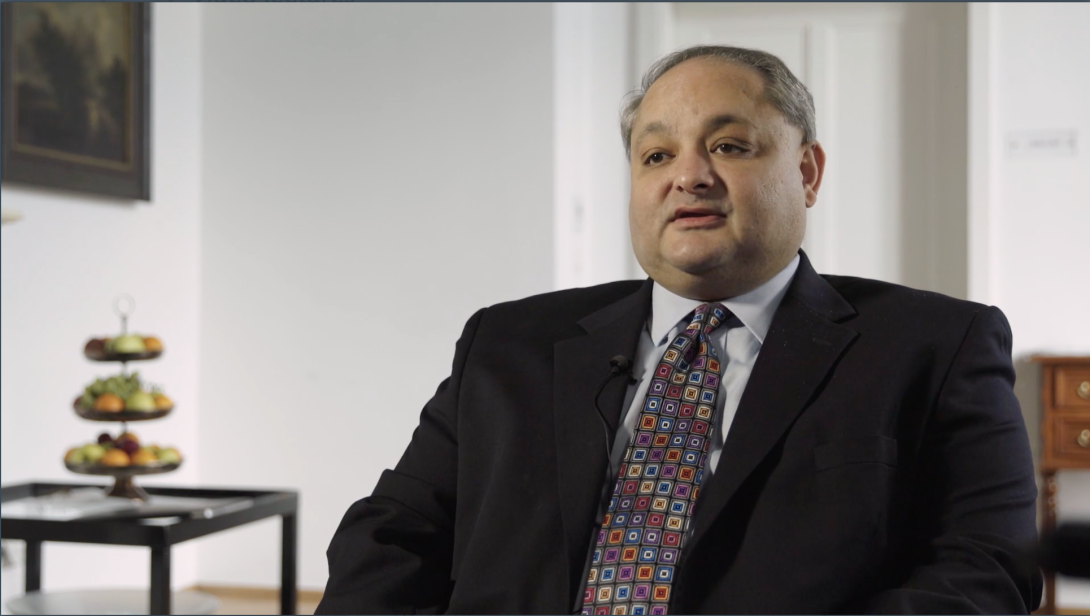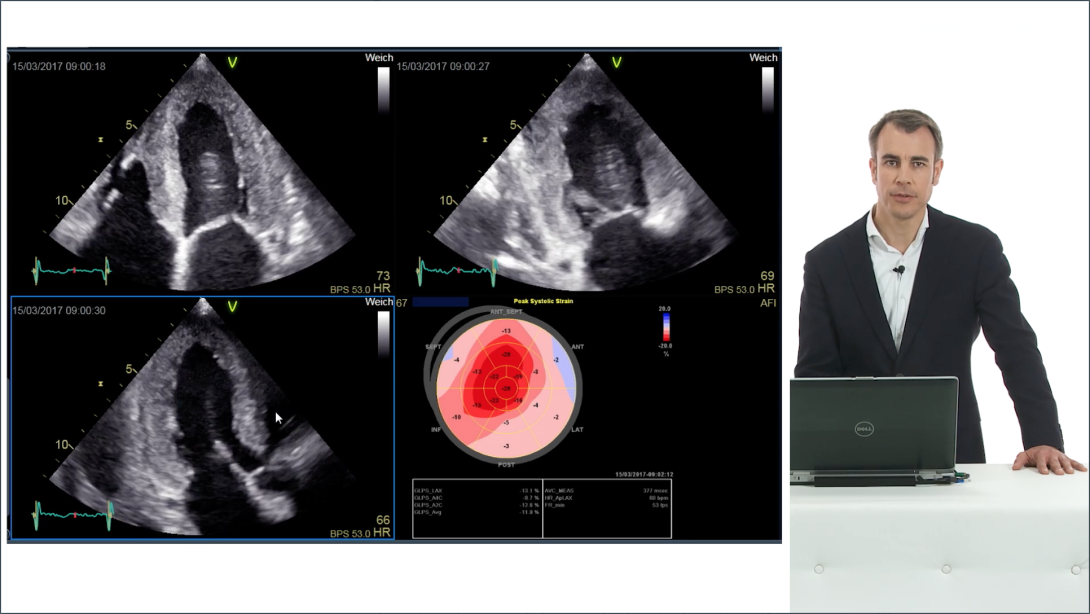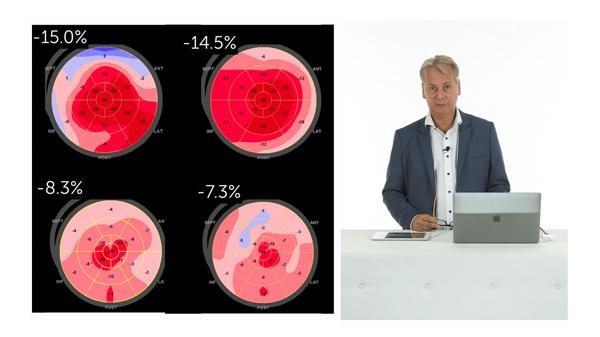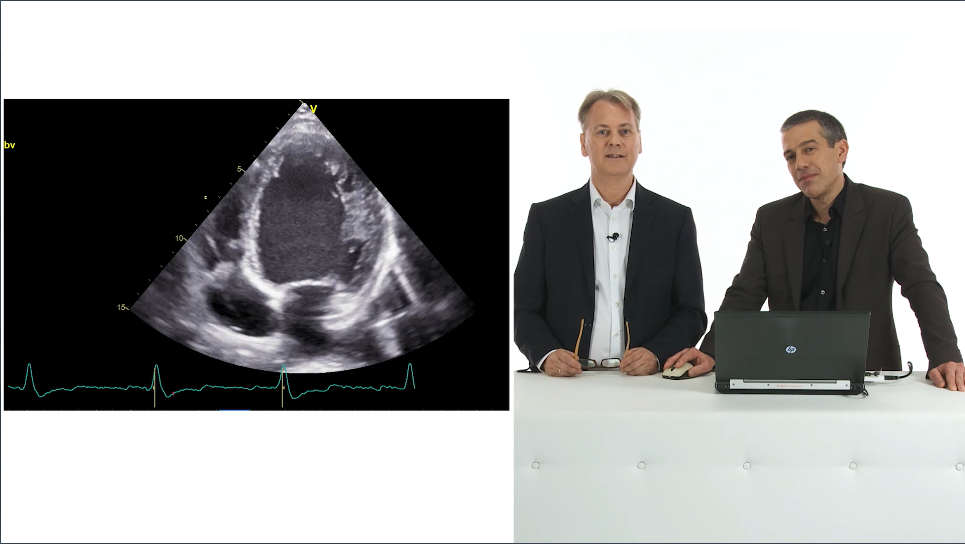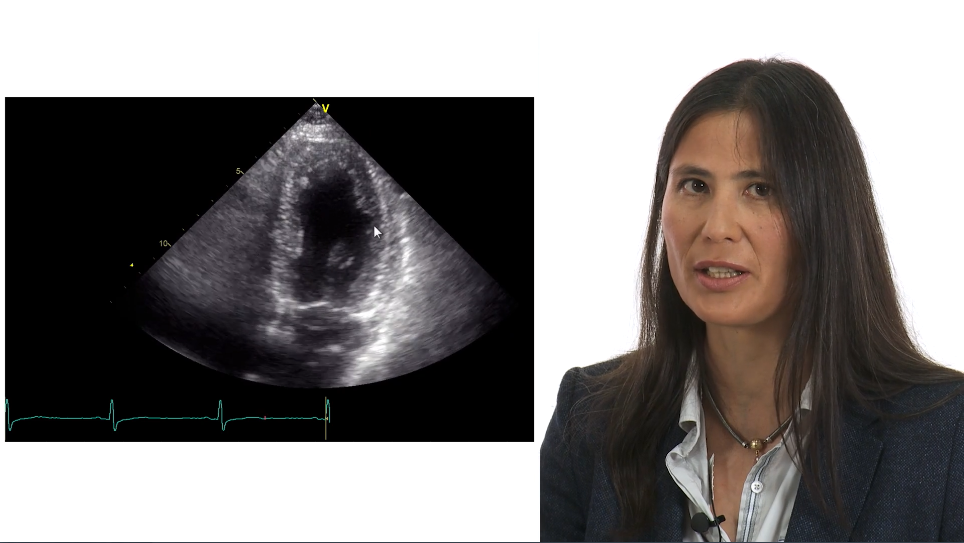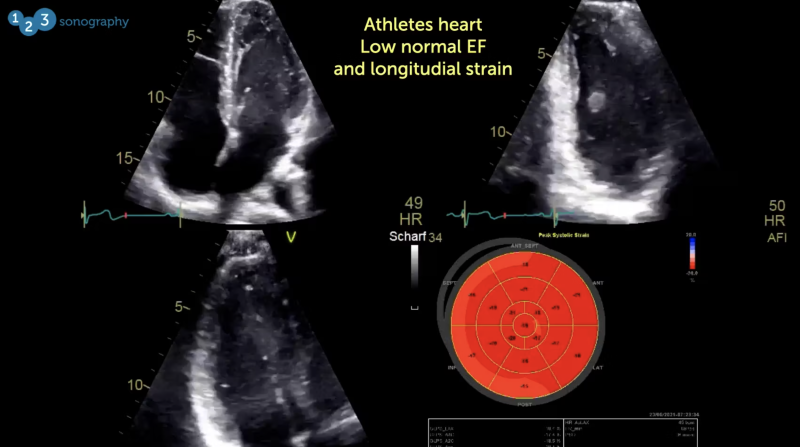Course Speakers
Curriculum
Chapter 1
Free lectures
2 lectures and 0 quizzes
Lectures & Quizzes:
Chapter 2
3 CME
Compendium
Speckle Tracking Compendium is a systematic video tutorial covering the essentials of Speckle Tracking Echocardiography (Deformation Imaging) and how it can be used to study left heart function. The course provides an: Introduction explaining the relevance of Speckle Tracking Echocardiography. Critical view of ejection fraction that demonstrates the need for other techniques to quantify left ventricular function. Explanation of what “deformation” is and how Speckle Tracking is able to measure “strain”. Demonstration of how to record images and perform a basic Speckle Tracking analysis (bullseye display). Overview of the most important clinical applications of Speckle Tracking, what we know from the literature, and how it can be used in clinical decision making.
12 lectures and 1 quizzes
Lectures & Quizzes:
Chapter 3
0.25 CME
Myocardial Mechanics - Advanced
An important chapter that will set the stage for a better understanding of strain and its role in cardiovascular disease. Here you will learn how the heart muscle contracts, which parameters of cardiac function we can describe and which components of strain we can discern.
1 lectures and 1 quizzes
Lectures & Quizzes:
Chapter 4
0.5 CME
Methodology and Normal Findings
This chapter will provide you with in depth knowledge on what deformation is and which parameters can be measured. You will learn how Speckle Tracking works, which advantages it has to tissue Doppler and if values can be compared among different vendors. Finally, we will answer the question: Can we currently define normal values?
1 lectures and 1 quizzes
Lectures & Quizzes:
Chapter 5
Instrumentation - Different vendors
How should a strain analysis be performed? Which buttons do I press? Which information can be obtained? We show you how to get the most out of a Speckle Tracking analysis on four different platforms (Canon/Toshiba, GE EchoPac, Siemens SC2000 and TomTec).
4 lectures and 0 quizzes
Lectures & Quizzes:
Chapter 6
1.25 CME
Thick Myocardium
Here you will dig deeper into the field of longitudinal strain in patients with increased wall thickness. You will learn how this tool can help in the differential diagnosis of different causes of "thick walls" such as hypertrophic CMP, hypertensive heart disease, amyloid heart disease and athletes heart. We will also discuss the prognostic value that Speckle Tracking echocardiography can provide and illustrate this through many cases.
3 lectures and 1 quizzes
Lectures & Quizzes:
Chapter 7
0.5 CME
Dilated Cardiomyopathy - Advanced
Speckle Tracking can have a large impact on the management of patients with dilated CMP. This chapters demonstrates why it is of value, how it can help to assess left ventricular function and which prognostic information it provides. Again, we show many case examples that will help you better understand how STE can be used in various settings including patients with HFpEF.
1 lectures and 1 quizzes
Lectures & Quizzes:
Chapter 8
1 CME
Cardio-Oncology
With improvements in the survival of cancer, chemotherapy induced cardiotoxicity is a growing problem. In this chapter, you will discover the magnitude of this problem, which risk factors we can identify and what the mechanisms of cardiotoxicity are. You will also learn how STE should be implemented into your workflow to detect cardiotoxicity at an early stage.
3 lectures and 1 quizzes
Lectures & Quizzes:
Chapter 9
0.5 CME
Dyssynchrony - Advanced
Speckle Tracking allows you to look at the timing of regional contraction. Therefore, STE can be used to study dyssynchrony in potential CRT candidates. This chapter will provide an overview on dyssynchrony and how the Speckle Tracking curves can help you to detect, and even quantify, the magnitude of dyssynchrony. Within specific cases we will provide many practical tips.
1 lectures and 1 quizzes
Lectures & Quizzes:
Chapter 10
1 CME
Coronary Artery Disease
With STE it is possible to look at regional contraction in the setting of coronary artery disease. In this chapter we will discuss how acute coronary syndromes and chronic coronary artery disease influence longitudinal strain, what post-systolic thickening is and why it is important in coronary artery disease. Case examples will highlight the different patterns of regional longitudinal strain depending on the affected coronary territory and which prognositic information longitudonal strain can provide.
2 lectures and 1 quizzes
Lectures & Quizzes:
Chapter 11
0.25 CME
Stress Echo
If strain is able to detect ischemia, why not apply it during stress echocardiography? This chapter discusses the potential role and limitation of Speckle Tracking to detect coronary artery disease during stress echocardiography.
1 lectures and 1 quizzes
Lectures & Quizzes:
Chapter 12
0.5 CME
Aortic Stenosis
Left ventricular function plays an important role in the management of patients with aortic stenosis, and Speckle Tracking is able to provide valuable information on top of ejection fraction. This chapter will explain why and show how this technique can be used to monitor patients and assess the prognosis.
1 lectures and 1 quizzes
Lectures & Quizzes:
Chapter 13
0.5 CME
Aortic Regurgitation
Aortic regurgitation can cause left ventricular dysfunction. With Speckle Tracking, we can detect deterioration of left ventricular function at an early stage. How can this be helpful in aortic regurgitaion? What are the current guidelines for the management of patients with AR? Keynote lectures and cases studies will provide you these answers.
1 lectures and 1 quizzes
Lectures & Quizzes:
Chapter 14
1 CME
Mitral Regurgitation
Optimal timing of surgery in mitral regurgitation is critical for long term survival. In this chapter, we provide an overview of the current guidelines and show how Speckle Tracking can provide important additional information, both in structural and functional mitral regurgitation. Several case examples will help you better understand in which scenarios strain is helpful.
2 lectures and 1 quizzes
Lectures & Quizzes:
Chapter 15
1 CME
Right Ventricular Strain
Longitudinal deformation can also be measured in the right ventricle. This chapter will show you how such an analysis is performed, how strain compares to traditional parameters of right ventricular function, what the normal values are and in which clinical scenarios this information is of value. Numerous case examples will put this theoretical knowledge into a practical context.
2 lectures and 1 quizzes
Lectures & Quizzes:
Chapter 16
0.5 CME
Left Atrial Strain
The measurement of left atrial strain is a promising new way to study the function of the left atrium. It is easy to apply and could provide valuable information especially in patients with atrial fibrillation and diastolicdysfunction. In this chapter, we will discuss the physiology of the left atrium, technical aspects of the method, and what the prognostic significance is of a reduction in left atrial strain.
1 lectures and 1 quizzes
Lectures & Quizzes:
Chapter 17
0.5 CME
Future of STE
This chapter discusses the current limitations of the method and highlights the newest developments in ultrasound. Find out how Speckle Tracking can be used to directly image blood flow and and how high frame rate imaging could dramatically change the way we use Speckle Tracking in the future.
1 lectures and 1 quizzes
Lectures & Quizzes:
Objectives

After completing the Speckle Tracking MasterClass, you will be able to perform speckle-tracking echocardiography.
Know which parameters can be determined.
Learn about the pitfalls of the method.
Know when to use speckle tracking in clinical practice.
Ideal for:

Student Discount
Are you a student? Get 50% discount on this course by completing the student application form.
Get Student DiscountRecommended Blog Posts
Pricing
One-Month Access
Take the most flexible route with a monthly subscription.
You get:
- Cancellation possible anytime after 4 months minimum run time
- Ability to complete quizzes and earn CME credits
Half-Year Access
<
Our shortest option for very fast learners. Ideal for people who have plenty of time to learn.
You get:
- 6 months access to our course
- Ability to complete quizzes and earn CME credits
One-Year Access
Our most recommended access duration to dive deep into the course. Save 30% on the 6-month option.
You get:
- 12 months access to our course
- Ability to complete quizzes and earn CME credits
Two-Year Access
If you want to take your time learning, this option is perfect for you. Save 40% on the 6-month option.
You get:
- 24 months access to our course
- Ability to complete quizzes and earn CME credits

